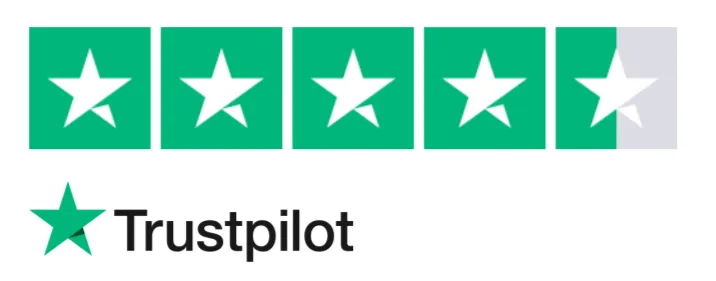Nell'era digitale, in cui le informazioni sono spesso a portata di clic, la capacità di accedere, ricercare e analizzare rapidamente i dati testuali è diventata sempre più importante. Tuttavia, quando si tratta di alcuni tipi di file come i PDF, estrarre e manipolare testo o tabelle non è sempre così semplice. È qui che entra in gioco il PDF OCR.
In questo articolo, analizzeremo a fondo il mondo del PDF OCR. Esploreremo cos'è, come funziona e perché è indispensabile per le aziende. Esamineremo anche alcuni dei migliori strumenti PDF OCR sul mercato e discuteremo delle tendenze future di questa tecnologia all'avanguardia.
Comprendere i file PDF
Adobe Systems ha introdotto per la prima volta il Portable Document Format (PDF) nel 1993, seguito successivamente dallo standard ISO 32000 della International Organization for Standardization.
Sapevi che oggi esistono più di 2,5 trilioni di PDF?
Quanti tipi di PDF esistono?
Nel corso degli anni, i PDF si sono evoluti in diverse versioni con funzionalità e capacità migliorate.
| Tipi di PDF | Descrizione |
|---|---|
| Formato PDF standard | |
| PDF/A | Usato per l'archiviazione a lungo termine |
| PDF/E | Utilizzato per documenti di ingegneria e costruzione |
| PDF/X | Utilizzato per la progettazione grafica e la stampa |
| PDF/VT | Indica la stampa variabile e transazionale. Ha una personalizzazione più avanzata rispetto a PDF/X |
| PDF/UA | Indica accessibilità universale. Aiuta a migliorare l'esperienza utente per persone con disabilità |
Sfide nell’estrazione manuale del testo dai PDF
I documenti PDF sono ampiamente utilizzati in vari settori per archiviare e condividere informazioni. Sfortunatamente, nonostante l'avvento della tecnologia, alcune aziende svolgono ancora attività di inserimento dati manuale.
Di conseguenza, solo il 12% riesce ad agire automaticamente sui propri insight derivanti dai dati.
Quando si avvia un'attività, dato che i documenti sono pochi, i compiti manuali di inserimento dati non richiedono molto tempo. Ma con la crescita dell’azienda crescono anche i documenti! Investire tempo e risorse in attività che possono essere automatizzate non vale la pena.
Nel 1992, George Labovitz e Yu Sang Chang hanno introdotto la regola 1-10-100 per valutare l'impatto dei dati errati. Servono 1$ per verificare i dati, 10$ per correggere dati errati e 100$ quando i dati non sono mai stati puliti.
Non puoi evitare errori umani con l’inserimento dati manuale. Il tasso di errore umano di solito si aggira attorno all’1%. Questo porta a incoerenze nell’accuratezza dei dati, con potenziali problemi di conformità, finanziari e clienti insoddisfatti.
OCR per automatizzare l’estrazione dei dati
Dagli anni ‘90 ai 2000, la tecnologia Optical Character Recognition (OCR) ha acquisito popolarità per automatizzare processi manuali in diversi settori, come healthcare e servizi finanziari.
Google Books è stato lanciato per scansionare e convertire libri e riviste tramite OCR.
Come funziona l’OCR?
La tecnologia OCR converte immagini, PDF scansionati e testi scritti a mano in testo leggibile dalla macchina. Il processo OCR si svolge principalmente in 3 fasi:
- Preprocessing: Il software OCR prepara il documento tramite tecniche come la rimozione del rumore, l’allineamento e il ridimensionamento.
- Riconoscimento caratteri/testo: Pattern e riconoscimento di funzionalità sono due metodi utilizzati per identificare il testo in un documento.
- Post-processing: I dati vengono convertiti in testo strutturato.
Scopri di più su che cos’è l’OCR
Sfide dell’OCR tradizionale
L’OCR tradizionale o classico estrae i dati esclusivamente in testo semplice, il che significa che questi dati non possono essere inviati a un’altra applicazione.
La tecnologia OCR potrebbe non riconoscere formattazioni complesse, come tabelle, grafici o elementi grafici, e può richiedere elaborazioni aggiuntive per estrarre queste informazioni.
Risulta difficile estrarre correttamente i dati da documenti con layout e formati differenti. Circa il 10-15% dei dati risulterà sempre mancante o inaccurato.
Che cos’è il PDF OCR? Unione di PDF e OCR
Il PDF OCR converte i dati in contenuti ricercabili ed editabili. Utilizza algoritmi avanzati come machine learning (ML), computer vision, natural language processing (NLP) e intelligenza artificiale (AI) per estrarre i dati con precisione.
Tipi di PDF OCR
Per superare i limiti dell’OCR tradizionale, sono nate tecnologie avanzate come l’OCR Zonale e l’OCR AI.
OCR Zonale
Chiamato anche seconda generazione dell’OCR, l’OCR Zonale estrae i dati da specifiche “zone” di un documento. Diversamente dai normali strumenti OCR, può convertire testo non strutturato in dati strutturati
Scopri di più su che cos’è l’OCR Zonale
OCR Dinamico
Parseur ha creato l’OCR Dinamico per estrarre campi che si spostano all’interno di un documento o variano di dimensione. Ad esempio, campi come “totale” o “totale complessivo” non restano mai in una posizione fissa.
Scopri di più su che cos’è l’OCR Dinamico
AI OCR
Gli strumenti OCR potenziati dall’AI possono sfruttare tecnologie avanzate come il deep learning, garantendo un’estrazione e un’elaborazione dati rapida. Hanno la capacità di gestire grandi moli di dati. Combinare OCR e AI ha enormemente migliorato il processo di acquisizione dati.
Scopri di più su che cos’è l’AI OCR
Perché dovresti usare il PDF OCR?
Automatizzare l’estrazione dati con il PDF OCR renderà la tua azienda più efficiente in termini di costi. Vediamo qui sotto i vantaggi del PDF OCR.
Riduce il tempo dedicato a compiti manuali di inserimento dati
Uno dei principali vantaggi è che elimina la gestione manuale delle informazioni. I tuoi collaboratori non dovranno più passare ore a cercare dati specifici e copiarli in un altro database. Questo processo sarà completamente automatizzato!
Converte i PDF in formati editabili
Con il PDF OCR, documenti scansionati o PDF basati su immagini vengono automaticamente convertiti in versioni ricercabili. Questo aumenta l’efficienza nella ricerca di parole chiave specifiche.
Si integra perfettamente con database esistenti e altre applicazioni
Puoi collegare il PDF OCR a migliaia di altri strumenti come Zapier, Power Automate, Zoho CRM o software ERP. Puoi anche inviare dati tramite Webhook o API personalizzata.
Casi d’uso del PDF OCR
Il PDF OCR è uno strumento prezioso per qualsiasi organizzazione che voglia snellire i propri processi.
Elaborazione fatture
Digitalizzare fatture cartacee con la tecnologia PDF OCR aiuta le aziende a mantenere registri migliori e a facilitare la tracciabilità di fatture e pagamenti.
I dati delle fatture scansionate possono essere inviati automaticamente a QuickBooks o a qualsiasi altro software di contabilità.
Approfondimenti
Come automatizzare la gestione delle fatture
Come usare un OCR per ricevute
Bill of lading (lettera di vettura)
La tecnologia PDF OCR può aiutare le aziende a ottimizzare i processi BOL e migliorare accuratezza, efficienza e comunicazione. Questo può generare risparmi significativi e altri vantaggi per le aziende che si basano sulla logistica e le spedizioni.
E-commerce
Può aiutare a migliorare accuratezza e velocità nell’elaborazione degli ordini automatizzando l’estrazione dei dati da ordini d’acquisto, fatture e documenti di spedizione. Così le aziende processano più velocemente gli ordini e migliorano la soddisfazione dei clienti.
Fattori da considerare nella scelta di uno strumento PDF OCR
Sul web puoi trovare qualsiasi strumento di estrazione dati, ma è importante investire in uno che risponda alle reali esigenze aziendali e al tuo budget.
- Ha un alto tasso di accuratezza?
- Supporta più lingue?
- È low-code, no-code o richiede competenze tecniche?
- Può essere integrato con qualsiasi app?
- È un software PDF OCR avanzato?
I migliori strumenti PDF OCR nel 2025
Abbiamo stilato una lista dei 5 migliori software PDF OCR da tenere d’occhio quest’anno.
Parseur
Parseur va oltre l’OCR con il suo potente motore AI per estrarre dati dai PDF con un livello elevato di precisione.
- Supporta 100+ lingue
- Ha template assistiti dall’AI per diversi settori
- È integrato con OCR Zonale e OCR Dinamico
- Riconosce testo e caratteri scritti a mano
- Dispone di una potente piattaforma basata su template
- Ha integrazione nativa con Zapier, Make e Power Automate
- Può anche estrarre dati dalle email in modo automatico
- Può estrarre dati tabellari e blocchi di testo ripetitivi
Guarda tutte le funzionalità di Parseur
Parseur offre un piano gratuito con tutte le funzionalità disponibili. I piani a pagamento costano 3 volte meno rispetto ad altri software.
Confronta Parseur con altri parser PDF
Cliente soddisfatto
Utilizziamo Parseur da diversi anni ormai. Tra tutte le applicazioni SaaS che usiamo, e sono tante, Parseur è una delle poche senza mai un downtime. Unito a un supporto eccellente, posso solo raccomandare Parseur dalla A alla Z.
Adobe Acrobat Pro
È un noto editor PDF con funzionalità OCR che converte i file scansionati in formati editabili. Riconosce qualsiasi testo e formattazione e supporta più lingue.
ABBYY FineReader PDF
ABBYY utilizza la tecnologia OCR basata su AI per digitalizzare e scansionare documenti cartacei. È compatibile con Windows, macOS e dispositivi mobili e offre un’interfaccia utente intuitiva. Include anche un lettore di screenshot che trasforma le schermate in testo.
Readiris
Readiris è una soluzione globale per convertire, modificare e firmare documenti. È un software di OCR intelligente sia per Windows sia per Mac OS. Può anche trasformare i documenti in file audio con la funzione di riconoscimento vocale.
Google Document AI
La tecnologia OCR di Document AI viene utilizzata per convertire documenti scansionati o digitali in testo ricercabile ed editabile. Ha modelli pre-addestrati integrati con l’OCR per l’elaborazione documentale e l’estrazione dati.
Il futuro del PDF OCR
Gli strumenti PDF OCR integrati con l’AI possono facilmente colmare il divario tra documenti statici e file editabili. Con i continui progressi dell’intelligenza artificiale, sicuramente vedremo software sempre più sofisticati rivoluzionare il processo di estrazione dati.
Ultimo aggiornamento il




